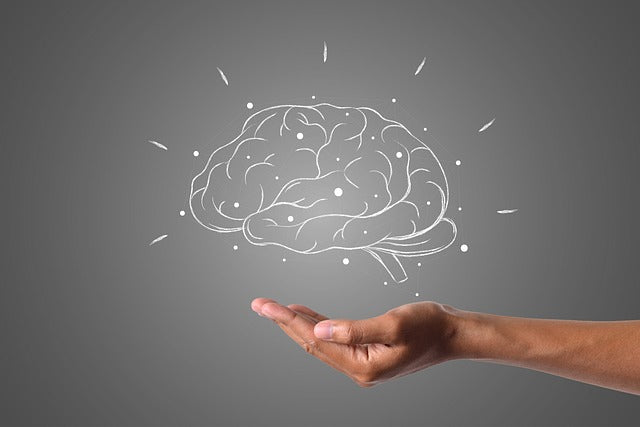Statistics indicate that the average business traveler travels 12 times per year for work, while the average American takes four leisure trips per year. Together, this amounts to a whole lot of travel!1,2 The dirty air on airplanes, long days spent sitting in a car or plane, and the consumption of unhealthy convenience foods make travel hard on the body. However, travel doesn't have to take a toll on your health! Read on to learn six biohacks that can up your travel game, helping you stay healthy and energetic wherever your travels take you!
Biohack #1: Align Your Circadian Rhythm
It is not uncommon to travel to a new time zone and suddenly be afflicted with headaches, insomnia, and unexplained digestive system changes. These annoying symptoms are the result of "jet lag," a set of adverse physiological changes that occur after travel across multiple time zones.
Jet lag disrupts your circadian rhythm, the set of biochemical processes in your body that follows an approximately 24-hour cycle and regulates many aspects of your behavior and physiology, including wakefulness and digestion. Your circadian rhythm is regulated primarily by light and dark exposure. When you suddenly land in a new time zone, the change in light/dark cycles throws off your normal circadian rhythm, producing circadian asynchrony and adverse downstream effects on your sleep quality, energy level, and digestion.
If left to its own devices, the human circadian rhythm takes about one day per time zone changed to adjust to a new time zone.3 However, you can expedite this process, and alleviate jet leg, with some simple biohacks! If you are a frequent flier, the biohacks mentioned next are especially important because long-term circadian rhythm disruption contributes to the development of many chronic diseases, including type 2 diabetes, heart disease, and cancer. In fact, the constant circadian rhythm disruption experienced by pilots and flight attendants may explain why cancer rates are higher in this demographic than in the general population.4,5
Prepare Your Body for A New Time Zone
Before taking a trip to a different time zone, you can reduce the impact on your circadian rhythm by gradually shifting your sleep and wake times pre-trip. First, determine how much you'll need to shift your sleep and wake times to go to bed and wake up at regular times in the new time zone. Then, a few days before your trip, go to bed earlier and wake up earlier at home, or vice versa, depending on which direction you will be traveling. For example, if you are traveling from Colorado to New York, shift to an earlier wake time and bedtime in Colorado for several days before leaving on your trip. Conversely, if you're traveling east to west, wake up and stay up an hour or two later several days pre-travel. This strategy will help your body align with the new time zone more rapidly.
Another quick tip for keeping your circadian rhythm in-check: Try not to sleep on the plane or nap when you arrive at your destination! Staying awake until your normal bedtime at the new destination will strengthen your sleep drive, making it easier to fall asleep when nighttime rolls around. This suggestion applies to flights of just a few hours; trans-continental flights that occur overnight warrant some in-flight sleep so that you are not utterly exhausted the next day!
Take Melatonin
Melatonin is a hormone made in the pineal gland of the brain. It responds to light and dark cues from your environment, telling you when it is time to wake up and fall asleep.6 Melatonin secretion typically begins a couple of hours before bed in response to dimming outdoor light, preparing you for sleep. Jet lag throws off melatonin secretion, potentially causing insomnia. You can compensate for abnormal melatonin secretion while traveling by taking supplemental melatonin. Supplemental melatonin signals to your brain that it’s time for bed, inducing deep, restful sleep.7
Get Strategic Light Exposure
Since light is a primary regulator of your circadian rhythm, obtaining strategic light exposure during your travels can help align your rhythm to the new location. Once you’ve arrived at your destination, aim for at least 15 minutes of morning light exposure; get out on a walk first thing in the morning, or eat breakfast outside on your balcony or at a cafe. At night, you can prepare yourself for restful sleep by wearing blue-light-blocking glasses for an hour or two before bed. Blue light-blocking lenses block blue wavelengths of light, which disrupt melatonin production and circadian rhythmicity.
Biohack #2: Quench Oxidative Stress
It's hard to beat the fantastic views of planet Earth that come with air travel. However, leaving the ground has several health drawbacks, one of which is exposure to cosmic radiation. When we are on the ground, Earth's atmosphere shields us from cosmic radiation, the high-energy radiation emitted by our solar system. However, when we leave the ground, we become vulnerable to cosmic radiation's oxidizing effects. The longer you are on a flight, the more radiation you receive.8 The oxidative stress induced by cosmic radiation, and other forms of electromagnetic radiation on flights, have adverse physiological effects throughout the body. In fact, the radiation experienced by airline crews is considered an occupational hazard!9
The poor air quality on airplanes is another oxidative stressor for the body. Research indicates that the air on planes is typically contaminated with engine oil, hydraulic fluid, and deicing fluid fumes sucked in from the outside.10 In fact, long-term exposure to the poor air quality on planes is linked to respiratory and neurological symptoms.
While circadian rhythm disruption undoubtedly contributes to the higher rates of chronic diseases in flight crew, oxidative stress clearly plays a crucial role as well.11,12 Free radicals produced during exposure to cosmic radiation and noxious airplane fumes “steal” electrons from DNA and other structures throughout the body, harming the body on a cellular level. If the body doesn’t have enough antioxidants to counteract the free radicals, long-term damage results. However, you needn’t avoid air travel altogether! By supplementing with antioxidants, you can fortify your body again the oxidative stress induced by air travel.
Which antioxidants should you include in your travel kit? The clear winners in our book are molecular hydrogen, vitamin C, and glutathione. Molecular hydrogen is a powerful yet gentle antioxidant that scavenges free radicals produced during radiation exposure.13 Vitamin C and glutathione are also powerful antioxidants that work synergistically to protect the body against free radicals and repair DNA, proteins, and tissues damaged by oxidative stress.14,15
Biohack #3: Fortify Your Immune System
Have you ever wondered why you always seem to come down with colds after air travel? Research indicates that the recirculated air on airplanes is rife with bacteria and viruses. The dry air on planes reduces the activity of pathogen-clearing cilia in the lungs, further increasing your risk of coming down with an infection.16,17 You can fortify your immune system against travel bugs by taking vitamin C and glutathione before and after your flight.18,19 With the help of these nutraceuticals, you can stay well and enjoy your travels to the fullest!
Biohack #4: Stay Hydrated
The air on planes is quite arid, at only 10-20 percent humidity! Breathing in this air for several hours at a time causes dehydration, unless sufficient measures are taken to maintain hydration. You can minimize in-flight dehydration by drinking water aboard your flight and by supplementing with deep-sea minerals, which have profound hydrating properties. Avoid dehydrating drinks such as alcohol and sodas. Our favorite way to take deep-sea minerals during travel is in convenient disposable sachets. Simply add the contents of one sachet to your water bottle and drink up to stay hydrated and healthy during your travels!
Biohack #5: Keep Your Gut Health in Check!
Travel usually involves eating foods outside of your regular dietary routine. While eating out and trying new foods is a highlight of travel, it can result in digestive upset, putting a significant damper on your trip! Keep your digestive system happy while you travel by bringing a probiotic with you; probiotics have been found to ease the symptoms of traveler's diarrhea and can help keep you “regular.”20
If you do happen to eat something that doesn’t agree with you, taking a binder can get your GI system back on track. Activated charcoal reduces intestinal gas that builds up on flights, while bentonite clay binds endotoxin, the cause of bacterial food poisoning.21,22 Activated charcoal and bentonite clay can help quench digestive distress during your travels.
The best thing you can do to prevent GI upset while traveling is to avoid going completely off-the-rails with your diet. Try to stick primarily to a diet of whole, fresh foods, while still enjoying indulgences here and there!
Biohack #6: Keep Moving
Long sedentary periods spent in a plane, car, or train take a toll on your body and lead to fatigue and stiffness. If you are road-tripping, make sure to stop periodically to stretch your legs. After long flights, consider using a travel-size foam roller to massage your sore muscles. Last but not least, try to fit in some form of exercise during your travels; this could include working out in a gym, taking a walk outside, or hitting up a local yoga class. The movement will boost your energy, making your travels far more enjoyable!
Travel is fun and exciting, and shouldn’t be hampered by excessive fatigue, digestive distress, insomnia, or stiff muscles! By incorporating the simple biohacks discussed here, you can reduce the discomfort associated with travel and make the most of your trip!
References
- Lake R. “Business Travel Statistics: 23 Speedy Facts to Know.” Credit Donkey. 8 January 2016, https://www.creditdonkey.com/business-travel-statistics.html.
- Statista Research Department. “Average number of leisure trips taken by travelers from the United States in the past 12 months from 2007 to 2016.” Statista. 24 Feb 2016, https://www.statista.com/statistics/185300/average-number-of-leisure-trips-in-the-us/.
- Ambesh P, et al. Jet lag: Heuristics and therapeutics. J Family Med Prim Care. 2018; 7(3): 507-510.
- McNeely E, et al. Cancer prevalence among flight attendants compared to the general population. Environ Health. 2018; 17: 49.
- Rafnsson V, et al. Incidence of cancer among commercial airline pilots. Occup Environ Med. 2000; 57: 175-179.
- Zisapel N. New perspectives on the role of melatonin in human sleep, circadian rhythms and their regulation. Br J Pharmacol. 2018; 175(16): 3190-3199.
- Herxheimer A, Petrie KJ. Melatonin for the prevention and treatment of jet lag. Cochrane Database Syst Rev. 2002; (2): CD001520.
- “Radiation from Air Travel.” Centers for Disease Control and Prevention. 7 December 2015. https://www.cdc.gov/nceh/radiation/air_travel.html.
- Butler GC, et al. Perspectives of those impacted: Airline pilot’s perspective. Health Physics. 2000; 79(5): 602-607.
- Michaelis S. Aerotoxic syndrome: a new occupational disease? (adverse health effects experienced by aircrew exposed to aircraft contaminated air). Occup Environ Med. 2018; 75: A15.
- McNeely E, et al. Estimating the health consequences of flight attendant work: comparing flight attendant health to the general population in a cross-sectional study. BMC Public Health. 2018; 18: 346.
- Wu AC, et al. Airplane pilot mental health and suicidal thoughts: a cross-sectional descriptive study via anonymous web-based survey. Environ Health. 2016; 15: 121.
- Huang L. Molecular hydrogen: a therapeutic antioxidant and beyond. Med Gas Res. 2016; 6(4): 219-222.
- Chambial S, et al. Vitamin C in disease prevention and cure: An overview. Indian J Clin Biochem. 2013; 28(4): 314-328.
- Song J, et al. Glutathione protects brain endothelial cells from hydrogen peroxide-induced oxidative stress by increasing Nrf2 expression. Exp Neurobiol. 2014; 23(1): 93-103.
- Hertzberg VS, et al. Behaviors, movements, and transmission of droplet-mediated respiratory diseases during transcontinental airline flights. PNAS. 2018; 115(14): 3623-3627.
- Leitmeyer A, Adlhoch C. Review article: Influenza transmission on aircraft: A systematic literature review. Epidemiology. 2016; 27(5): 743-751.
- Hemila H. Vitamin C and infections. Nutrients. 2017; 9(4): 339.
- Ghezzi P. Role of glutathione in immunity and inflammation in the lung. Int J Gen Med. 2011; 4: 105-113.
- DuPont HL. Lactobacillus GG in prevention of traveler's diarrhea: An encouraging first step. J Travel Med. 1997; 4(1): 1-2.
- Jain NK, et al. Efficacy of activated charcoal in reducing intestinal gas: a double-blind clinical trial. Am J Gastroenterol. 1986; 81(7): 532-535.
- Schaumberger S, et al. Evaluation of the endotoxin binding efficiency of clay minerals using the Limulus Amebocyte lysate test: an in vitro study. AMB Express. 2014; 4:1.




